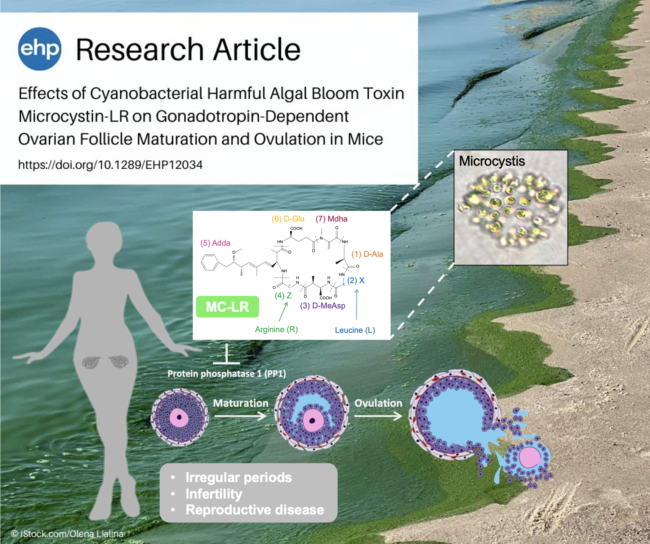Environmental Health Perspectives (EHP) is a monthly journal of environmental health research and news published with support from the National Institute of Environmental Health Sciences. Learn about EHP’s milestones and significant contributions to public health over the past five decades.
Cyanobacterial harmful algal blooms (CyanoHABs) are the excessive growth or bloom of cyanobacteria, which are often referred to as blue-green algae, in both marine and freshwater ecosystems that produce toxins associated with adverse health effects in humans and wildlife animals.1 Each decade, CyanoHABs increase globally in both severity and frequency, primarily owing to the global temperature rise caused by the climate change and the anthropogenic eutrophication associated with agricultural runoff and urbanization.2 Microcystins (MCs), the most common class of CyanoHAB toxins,3 are a family of cyclic heptapeptides with a general structure of cyclo-(d-Ala1-X2–d-MeAsp3-Z4-Adda5–d-Glu6-Mdha7). With two varying L-amino acids at positions X2 and Z4 and modifications in other amino acids, MCs contain nearly 280 different congeners.4 MCs persist in the environment owing to their high physiochemical stability.5 Humans are exposed to MCs via drinking water, food, algal dietary supplements, and recreational activities in polluted waters.6–8 In addition, high-exposure levels of MCs in humans have been reported through contaminated medical solutions, such as the dialysis fluid used in hemodialysis.9

Copyright © 2023, Rutgers, The State University of New Jersey



